I was recently asked to come up with a lists of things I have learned about being a composer. What would I tell myself as a young composer? What would I share with others?
Three categories come to mind – how I nurture myself, what is part of my practice, and what is the business of being a composer. Over time, the list has grown, but at the root is always, always, safeguard your creativity and enrich yourself as a working artist.
Here is the first of two installments – nurture and practice.
NURTURE, verb: to help (something or someone) to grow, develop, or succeed
Trust and value your own creativity.
Taking the time and patience to actively believe in myself as a creative person has been a life-time process. It has become a deep-self-knowing.
If you have creative aspirations and your friends are not supporting you, find new friends. I am constantly grounded by friends who are generous, non-judgmental, and who see my work as just part of who I am.Feed the mind, body and soul. Embrace experience.
As an artist, I am what I eat – so reading and traveling are experiences that are directly channeled into my work. Eat pray love – life is the resource. I read, dance, take art lessons, and walk. Being a composer requires a multi-pronged approach.
Build community where ever you can.
Reaching out and being interested in other artist’s work has been a gold mine for me. I am not only inspired by what others of all disciplines are doing, but it feeds my work as well as puts it into perspective. Moreover, to have a community to share struggles, resources, and work is invaluable.
Dare to create yourself anew.
Heartbreak, failure, being sidelined – all of these are part of life. It is how I act upon them, manage them, learn from them, move through them and dare to try again, in a strengthened position, that matters.
PRACTICE, noun or verb: 1. the actual application or use of an idea, belief, or method, 2. to perform or work at repeatedly so as to become proficient
Talent depends on hard work – it demands it.
For me, there has never been an easy, quick path forward that doesn’t include time, discipline and work. The willingness to sit down and face what ever is in front of me, every day, most days, is essential.
 Heave your heart into your mouth – often.
Heave your heart into your mouth – often.
Composing is about authentically speaking about myself to others, not so that they understand me, but resonate with my music.
Learn that “no” is part of the artistic process.
When discouraged, I take comfort that even successful artists get rejected. A life of artists’ endeavor is a process not a destination. I am in it for the long game and just keep going.
Journal every day.
Finding words to express my inner thoughts is part of my daily artistic practice. This allowed me to dig deeper into myself and my art. It is a place of asking myself questions – what is holding me back, what could I do better? Who are the inside voices that are giving me negative commentary?
Take a nap.
When blocked in my work, I take a walk, meditate or – my favorite, take a nap. My brain has an amazing ability to solve problems when left alone.
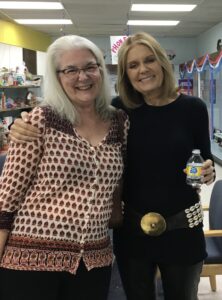 My mother was the first feminist in the family. She read Gloria Steinem, Kate Millett, Germaine Greer and Betty Friedan. She taught women’s studies and went to on countless marches. True, she often spat and lectured. A professor at the State College in Oneonta, mother of five, she knew the limits of her salary and position. She had valid grievances and was angry.
My mother was the first feminist in the family. She read Gloria Steinem, Kate Millett, Germaine Greer and Betty Friedan. She taught women’s studies and went to on countless marches. True, she often spat and lectured. A professor at the State College in Oneonta, mother of five, she knew the limits of her salary and position. She had valid grievances and was angry. the plates. We waited to see what emerged. Colors bloomed several days later, a brilliant white and a poisonous looking orange – a world invisible – existing only when it was allowed to grow by itself.
the plates. We waited to see what emerged. Colors bloomed several days later, a brilliant white and a poisonous looking orange – a world invisible – existing only when it was allowed to grow by itself.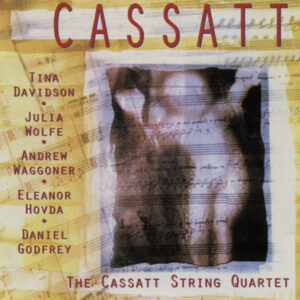 of the Greek prophetess who was never listened to or believed, and my hope for better times in the future. Women Dreaming, for mixed ensemble and piano, was my continued dreaming of possibilities. River of Love, River of Light, a seven movement choral piece, was my understanding of the female face of God.
of the Greek prophetess who was never listened to or believed, and my hope for better times in the future. Women Dreaming, for mixed ensemble and piano, was my continued dreaming of possibilities. River of Love, River of Light, a seven movement choral piece, was my understanding of the female face of God.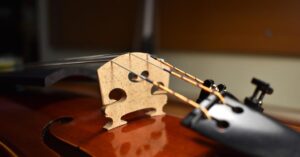 suggest. I am their supporter and collaborator. They are brilliant musicians. “Just play the music!”
suggest. I am their supporter and collaborator. They are brilliant musicians. “Just play the music!”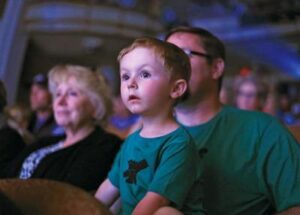 In the end, the performers collaborate with the audience – the receivers of the music. For me, it is a journey, a traveling through a sonic and emotional landscape. Because music can only experienced through time, the listener perceives the whole only with the aid of memory, a remembrance of beginning. As the performers bend over their music and the audience listens, the energy between them creates the experience.
In the end, the performers collaborate with the audience – the receivers of the music. For me, it is a journey, a traveling through a sonic and emotional landscape. Because music can only experienced through time, the listener perceives the whole only with the aid of memory, a remembrance of beginning. As the performers bend over their music and the audience listens, the energy between them creates the experience.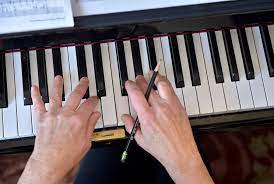 stiffening up the whole hand so it can bear the weight of the arm, or even engaging the back; soft sounds take more muscle restraint. Recently at a concert, I saw a brilliant young pianist stab the keyboard with stiffened fingers to create a percussive depth of sound, then bending her back, using loose wrists, her fingers whispered a soft rapid phrase.
stiffening up the whole hand so it can bear the weight of the arm, or even engaging the back; soft sounds take more muscle restraint. Recently at a concert, I saw a brilliant young pianist stab the keyboard with stiffened fingers to create a percussive depth of sound, then bending her back, using loose wrists, her fingers whispered a soft rapid phrase. Piano technique has a long and rich history. During Bach and Mozart’s time, the keyboards were light to the touch. Performers used what was know as the “finger action” school, where the arms were relatively fixed, and the fingers skittered along. As the piano evolved with a wider range of volume, the touch became heavier. Pianists and composers such as Chopin and Liszt began to use the weight of the arm, playing with a supple wrist; this became known as the “arm weight” school of technique. I love the description that
Piano technique has a long and rich history. During Bach and Mozart’s time, the keyboards were light to the touch. Performers used what was know as the “finger action” school, where the arms were relatively fixed, and the fingers skittered along. As the piano evolved with a wider range of volume, the touch became heavier. Pianists and composers such as Chopin and Liszt began to use the weight of the arm, playing with a supple wrist; this became known as the “arm weight” school of technique. I love the description that 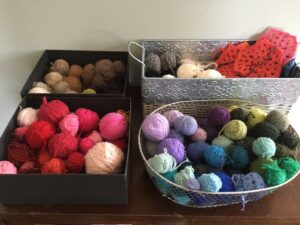 the way the yarn wound around my right index finger, slipped it in and out of clicking needles. Recently, I became fascinated with the various weights and textures of wool, and then, the consummate deliciousness of cashmere, thin, durable and much too expensive to buy. I found old cashmere sweaters at the thrift shop, and slowly undoing the side seams, I unraveled the yarn into glowing balls. I was, I confess, obsessed with the ease of this wealth of yarn and I made fingerless gloves, hats, scarves, and finally large cashmere blankets until my family begged me to stop.
the way the yarn wound around my right index finger, slipped it in and out of clicking needles. Recently, I became fascinated with the various weights and textures of wool, and then, the consummate deliciousness of cashmere, thin, durable and much too expensive to buy. I found old cashmere sweaters at the thrift shop, and slowly undoing the side seams, I unraveled the yarn into glowing balls. I was, I confess, obsessed with the ease of this wealth of yarn and I made fingerless gloves, hats, scarves, and finally large cashmere blankets until my family begged me to stop.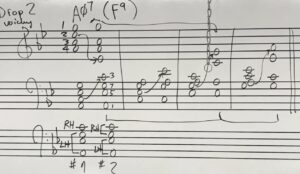 performance, harmony, counterpoint, set-theory, analysis and orchestration before pencil hits the paper. The canon maintains that understanding music history is an essential, and without it the artist gropes in the dark in a vain attempt to reinvent the wheel. The canon implies an order – one must do A before B. It reinforces that personal creativity is not trustworthy unless it is in an old container: it is not credible without context. In other words, one must be coupled to the past to make authentic, groundbreaking art.
performance, harmony, counterpoint, set-theory, analysis and orchestration before pencil hits the paper. The canon maintains that understanding music history is an essential, and without it the artist gropes in the dark in a vain attempt to reinvent the wheel. The canon implies an order – one must do A before B. It reinforces that personal creativity is not trustworthy unless it is in an old container: it is not credible without context. In other words, one must be coupled to the past to make authentic, groundbreaking art. a personal ownership that grows out of doing. I support experiencing writing music before too much comparison. In the initial stage, I want everyone to compose the way they painted in kindergarten. Hardly knowing how to hold a paint brush, they work with abandon and in full confidence of their creative abilities.
a personal ownership that grows out of doing. I support experiencing writing music before too much comparison. In the initial stage, I want everyone to compose the way they painted in kindergarten. Hardly knowing how to hold a paint brush, they work with abandon and in full confidence of their creative abilities.